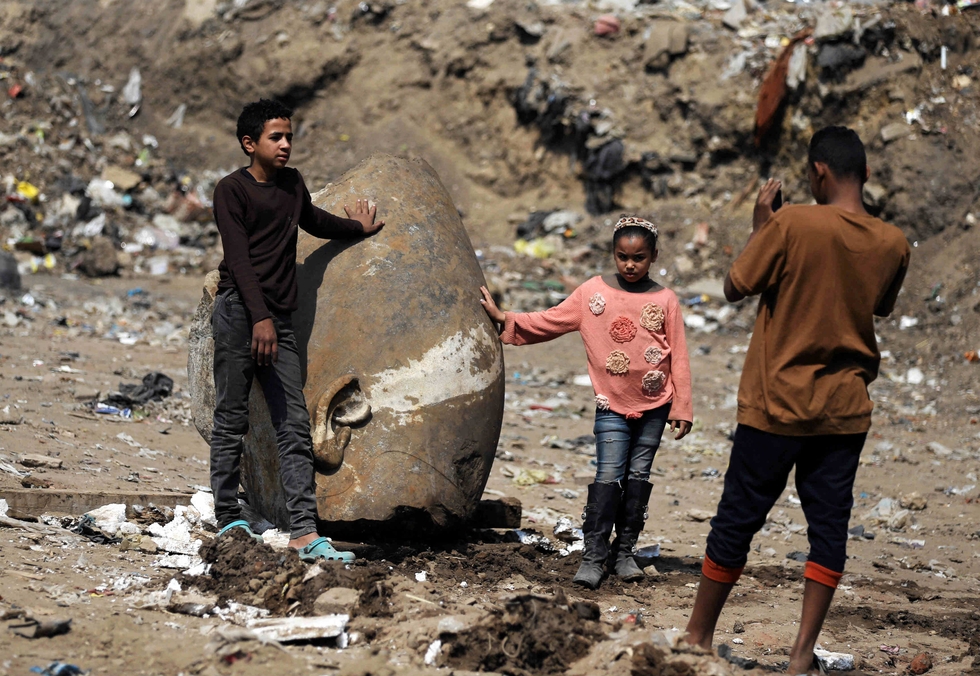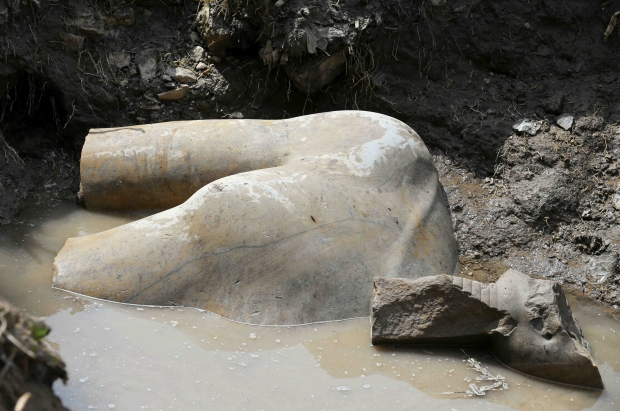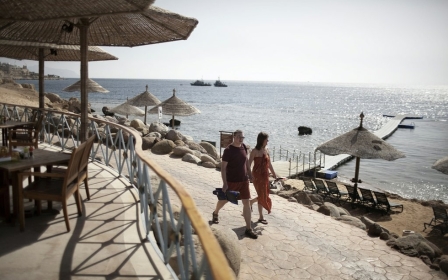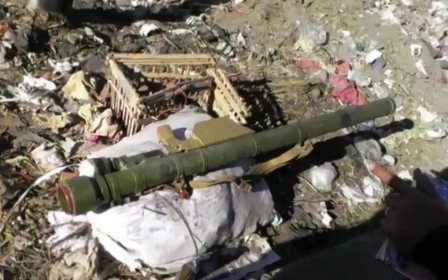Ramses the Great rises from watery grave after discovery in Cairo

Dig deep in an English backyard and you might snaffle a stone arrowhead, and the odd bit of pottery. Do the same in Egypt and you could hit paydirt with a 25-foot colossus of an ancient god-king.
That is exactly what happened on Thursday in Cairo, when a statue of ancient Egypt's pharaoh Ramses the Great was plucked from its watery grave in the heavily populated suburb of Heliopolis.
"Last Tuesday they called me to announce the big discovery of a colossus of a king, most probably Ramses II, made out of quartzite," said antiquities minister Khaled al-Anani on Thursday, at the site of the statue's unveiling.
The most powerful and celebrated ruler of ancient Egypt, Ramses the Great was the third of the Nineteenth Dynasty of Egypt and ruled from 1279 to 1213 BCE.
He led several military expeditions and expanded the Egyptian Empire to stretch from Syria in the east to Nubia in the south. His successors called him the "Great Ancestor".
Another statue was also found nearby, this one made of limestone, and part of a life-size statue of Pharoah Seti II, Ramses I’s son, and measures just under one metre.
Onlookers watched Thursday as the statues were pulled out of murky water by a forklift truck.
The sun temple in Heliopolis was founded by Ramses II, lending weight to the likelihood the statue is of him, archaeologists say.
The statues will now be restored and if they are successful and the piece is proven to depict Ramses II, it will be moved to the entrance of the Grand Egyptian Museum, set to open in 2018.
The discovery was made in the working class area of Matariya, among unfinished buildings and mud roads. How it got there is unclear.
Dietrich Raue, head of the expedition's German team, told Reuters that ancient Egyptians believed Heliopolis was the place where the sun god lives, meaning it was off-limits for any royal residences.
"The sun god created the world in Heliopolis, in Matariya. That's what I always tell the people here when they say is there anything important. According to the pharaonic belief, the world was created in Matariya," Raue said.
"That means everything had to be built here. Statues, temples, obelisks, everything. But ... the king never lived in Matariya, because it was the sun god living here."
Middle East Eye propose une couverture et une analyse indépendantes et incomparables du Moyen-Orient, de l’Afrique du Nord et d’autres régions du monde. Pour en savoir plus sur la reprise de ce contenu et les frais qui s’appliquent, veuillez remplir ce formulaire [en anglais]. Pour en savoir plus sur MEE, cliquez ici [en anglais].





